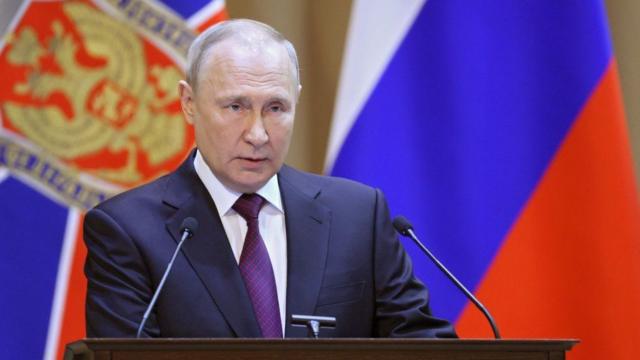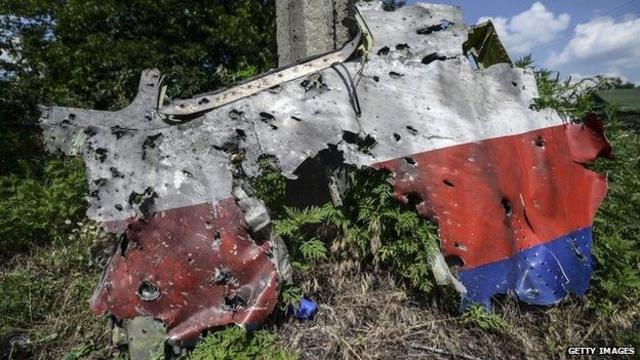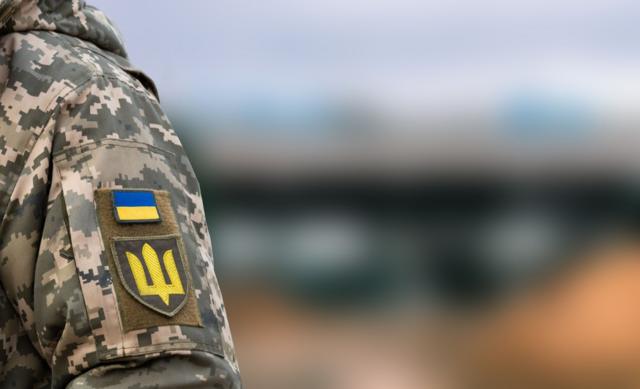For more than 10 years, the United States has maintained a secret intelligence partnership with Ukraine, which is now crucial for both countries in countering Russia, writes the American The New York Times , after interviewing 200 sources in both countries and European countries.
The newspaper writes that over the past eight years, the CIA has built 12 spy bases along the Russian border, one of which was visited by a NYT reporter.
In an underground bunker in the forest, servicemen of the Armed Forces track Russian spy satellites and eavesdrop on negotiations between Russian military commanders.
On one of the screens, the red line is the route of the drone that broke through Russian air defense from a point in central Ukraine to a target in Rostov, Russia, the journalist notes.
This base is almost entirely funded and partially equipped by the CIA. "At 110 percent," said intelligence general Serhiy Dvoretskyi in an interview he gave at the base.
As The New York Times writes, the details of the partnership between Ukrainian and American intelligence have been classified for a decade.
The CIA and other U.S. intelligence agencies provide intelligence for targeting missile strikes, track Russian troop movements, and help support spy networks.
And Ukrainian intelligence services, according to the publication, previously handed over radio intercepts related to the MH17 crash in 2014 in Donetsk region to the US special services. And also helped the USA in the revelations related to interference in the presidential elections there in 2016.
Around the same time, the article says, the CIA began training an elite Ukrainian special unit that captured Russian drones and communications equipment so that CIA engineers could reconstruct them and crack encryption systems.
According to the NYT, one of the officers of this unit was the current head of the GUR Kyrylo Budanov.
The CIA also helped train Ukrainian spies who operated inside Russia, across Europe, in Cuba and elsewhere.
CIA officers remained at a remote location in western Ukraine as US President Joe Biden's administration evacuated staff weeks before a major Russian attack began in February 2022.
The publication indicates that this network is now very important, as Russia is advancing , and Ukraine is increasingly "relying on sabotage and long-range missile strikes, which require the presence of spies far behind enemy lines."
Also, according to journalists, on February 22, CIA director William Burns came to Ukraine to assure the Ukrainian leadership of continued cooperation. This visit was the tenth since the start of the full-scale Russian invasion of Ukraine.
"From the very beginning, a common enemy — Russian President Vladimir Putin — united the CIA and its Ukrainian partners. Obsessed with the idea of delaying Ukraine's move to the West, Putin regularly intervened in Kyiv's political system, personally selecting leaders who, in his opinion, could keep Ukraine in Russia's orbit, but each time it backfired, gathering protesters on the streets," he points out. The New York Times.

PHOTO BY EPA
A new generation of spies
According to the publication, the CIA-GUR partnership began at the end of February 2014, when ex-president Viktor Yanukovych fled to Russia.
Such cooperation was proposed by Valentyn Nalyvaichenko, who then headed the SBU. At the same time, US rules prohibited the intelligence services from providing Ukraine with any support that would have deadly consequences.
The result was a delicate balancing act. The CIA should have strengthened the Ukrainian special services without provoking the Russians. However, the red lines were not clearly defined, which created constant tension in the partnership, the authors of the article indicate.
The NYT writes that in Kyiv, Nalyvaichenko selected his longtime aide, General Kondratyuk, as head of counterintelligence, and they created a new paramilitary unit that was deployed behind enemy lines to conduct operations and gather intelligence that the CIA or MI6 could not provide.
This unit, known as the Fifth Directorate, was staffed by officers born after Ukraine gained independence.
"They had no connection with Russia," General Kondratiuk said. "They didn't even know what the Soviet Union was."
Ukrainian intelligence cooperated diligently with the CIA and gradually became vital for the Americans, the publication writes. In 2015, General Kondratyuk came to a meeting with the deputy head of the CIA and handed over a stack of top-secret files without warning.
This first package contained secrets of the Russian Navy's Northern Fleet, including detailed information on new Russian nuclear submarine designs. Soon, groups of CIA employees began regularly leaving his office with entire backpacks of documents, the article says.
"We understood that we need to create conditions for trust," General Kondratyuk explained.
That summer, a Malaysia Airlines flight from Amsterdam to Kuala Lumpur exploded in mid-air and crashed in eastern Ukraine, killing nearly 300 passengers and crew. The Fifth Directorate intercepted phone calls and provided other intelligence within hours of the disaster, which quickly blamed Russian-backed separatists.
The CIA was impressed and made its first major commitment, providing secure communications equipment and special training for members of the Fifth Directorate and two other elite units.

PHOTO BY GETTY IMAGES Photo Caption The wreckage of Boeing MH17
"The Ukrainians wanted fish, and we, for political reasons, could not give them that fish," said a former American official, referring to intelligence that could help them fight the Russians. "But we were happy to teach them how to fish and deliver fishing equipment."
Journalists write that cooperation with Ukraine was so successful that the USA was thinking about creating similar units in other European special services to confront the Russian Federation.
The head of the CIA department, which deals with operations against the Russian Federation, even organized a secret meeting in the Netherlands. There, representatives of the CIA, the British MI-6, the Ukrainian GUR, the Dutch service and other agencies agreed to consolidate their intelligence data on Russia more.
The result was a secret coalition against Russia, and Ukrainians were important participants in it.

PHOTO BY GETTY IMAGES
However, if Republicans in Congress stop military funding for Kyiv, the CIA may have to cut spending, the NYT writes.
Some Ukrainian intelligence officers are now asking their American colleagues whether the CIA will abandon them. "It already happened in Afghanistan, and now it can happen in Ukraine," said one Ukrainian officer.
However, the recent visit of CIA director William Burns to Ukraine indicates the opposite, the authors of the article point out.
Speaking about Burns' visit to Kyiv last week, a CIA official said: "We have demonstrated a clear commitment to Ukraine for many years, and this visit is another strong signal that the US commitment will continue."
The CIA and the GRU have built two more secret bases to intercept Russian communications, and combined with 12 forward operating bases that General Kondratyuk says are still operational, the GRU is now gathering more intelligence than at any time during the war - mostly it shares it with the CIA.
"Such information cannot be obtained anywhere - only here and now," confirmed General Dvoretsky.

